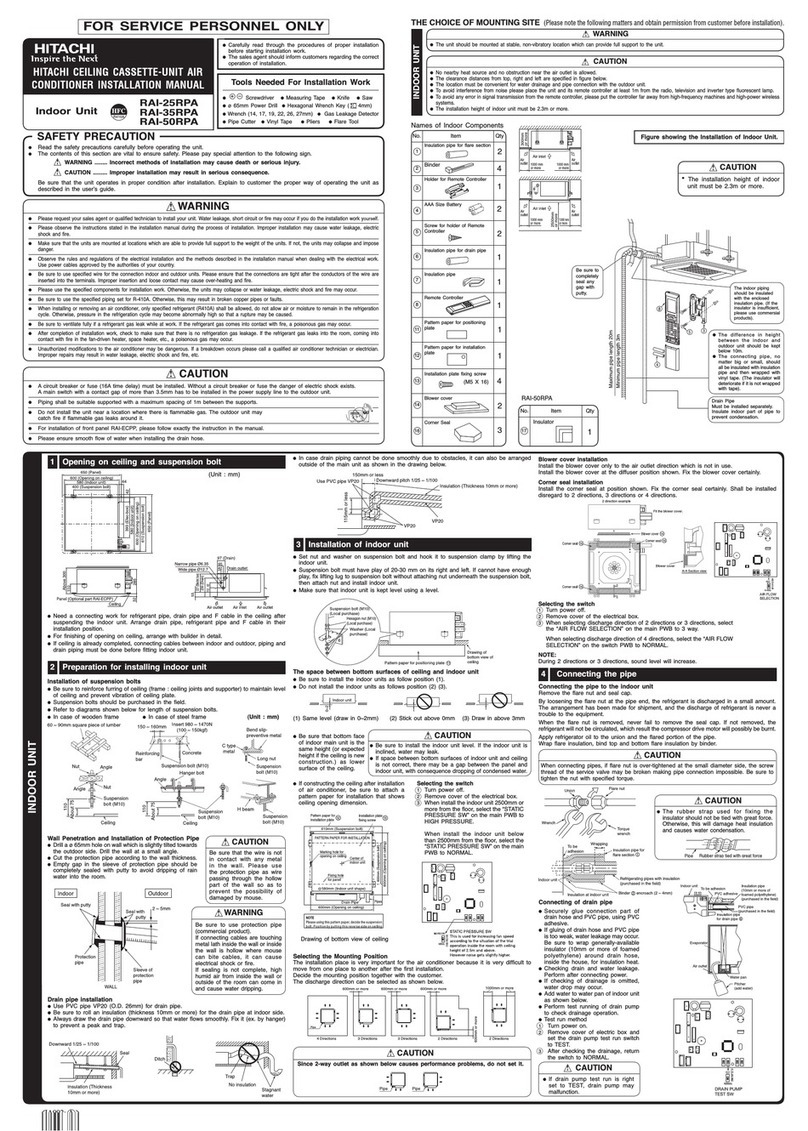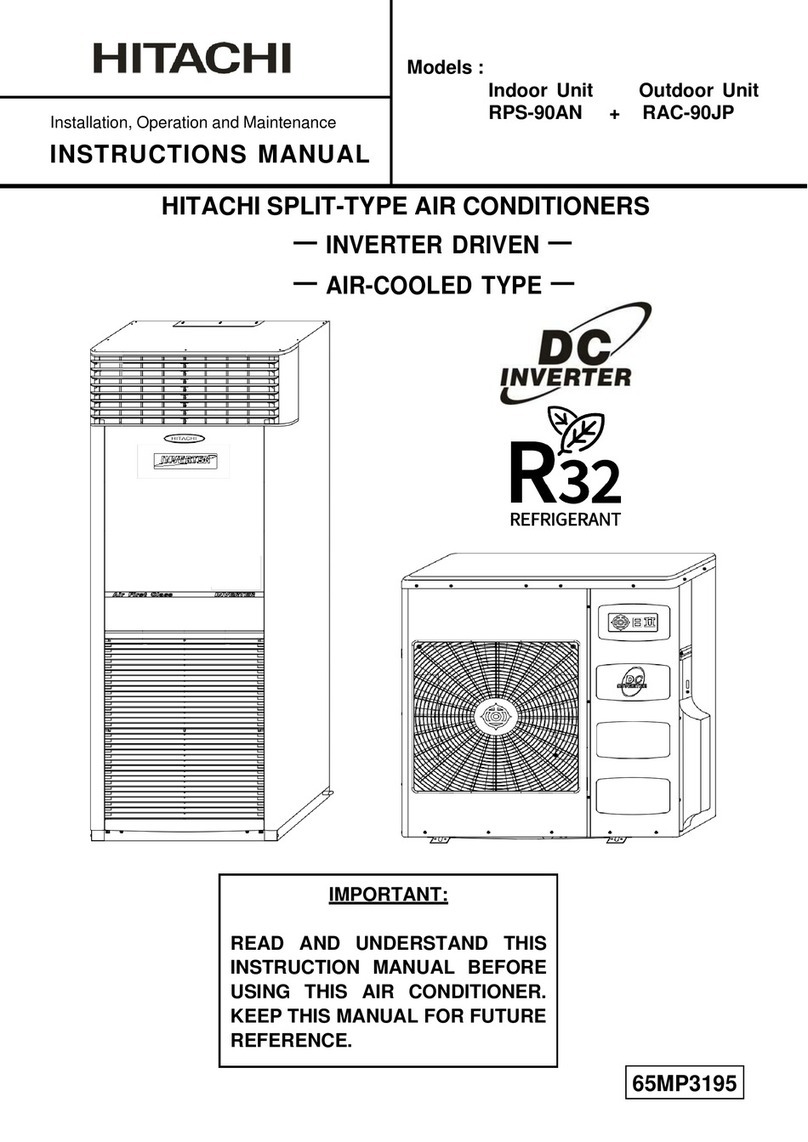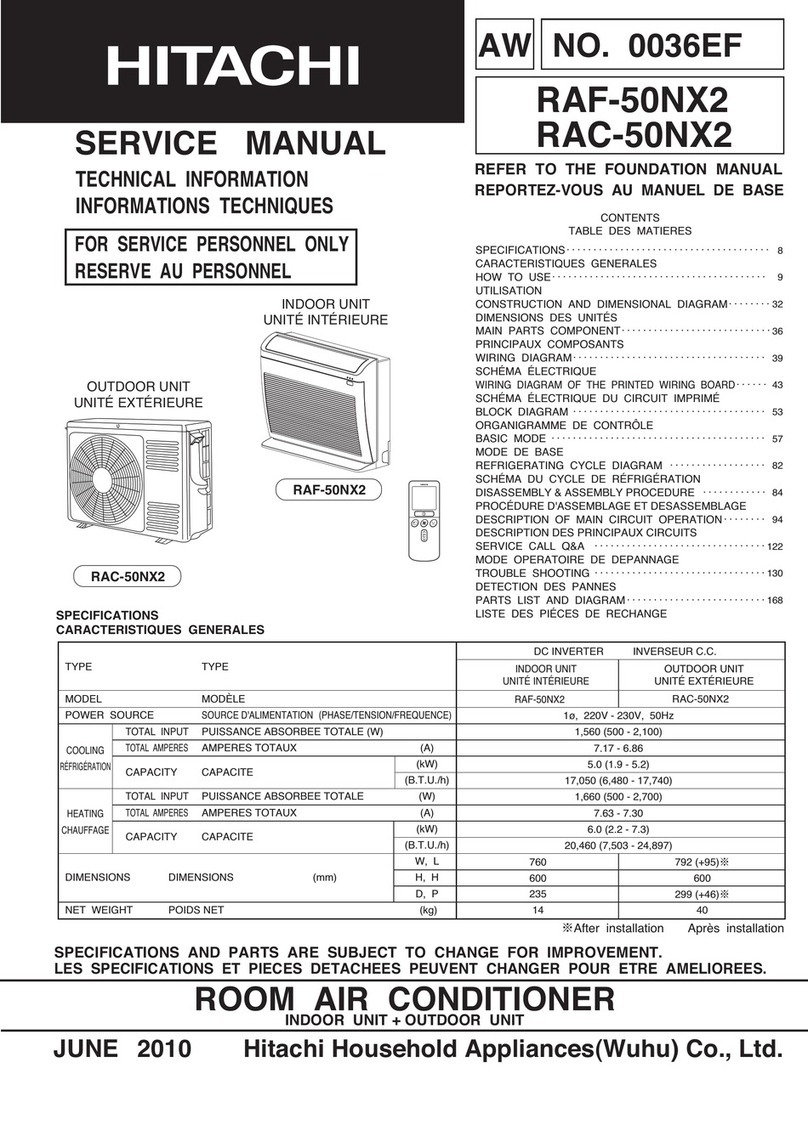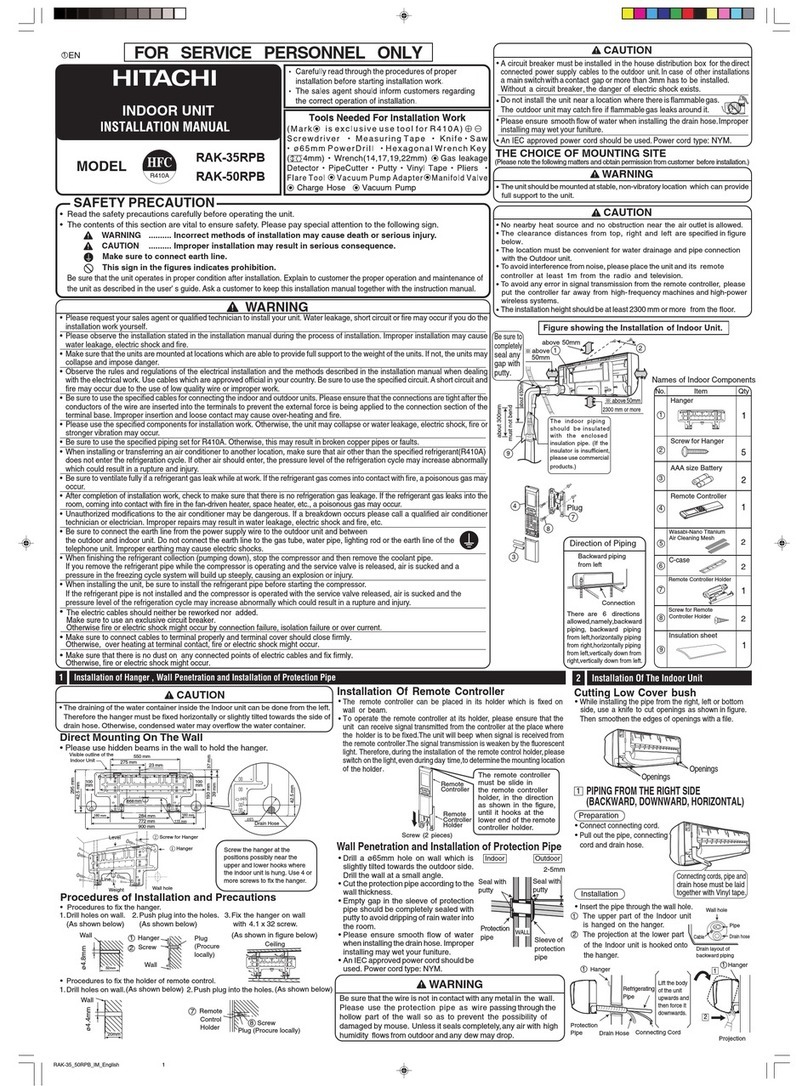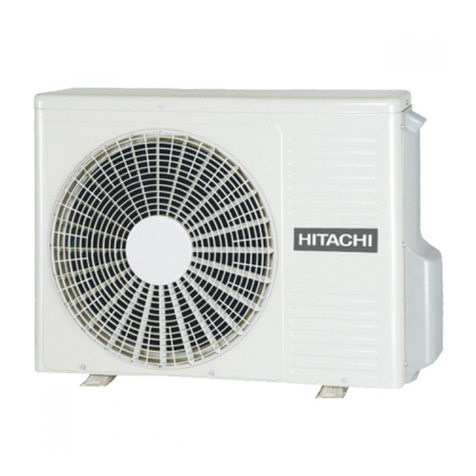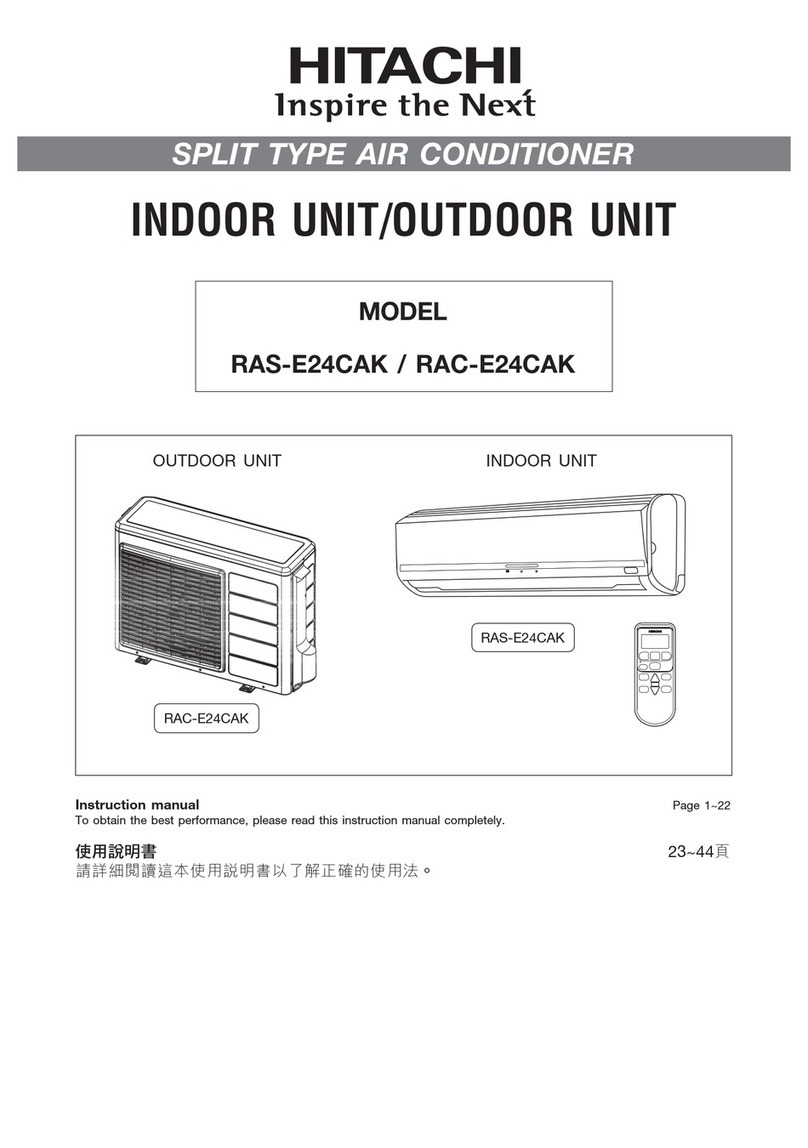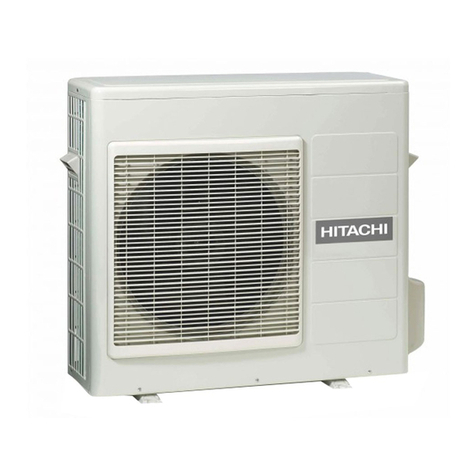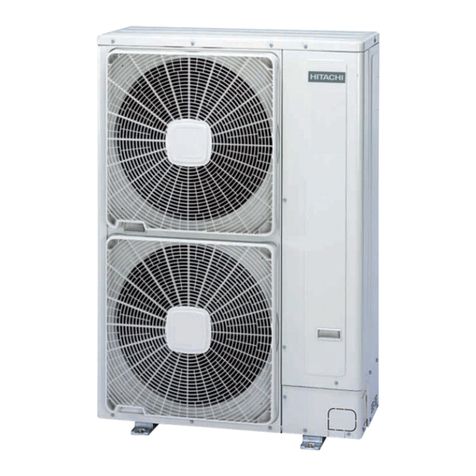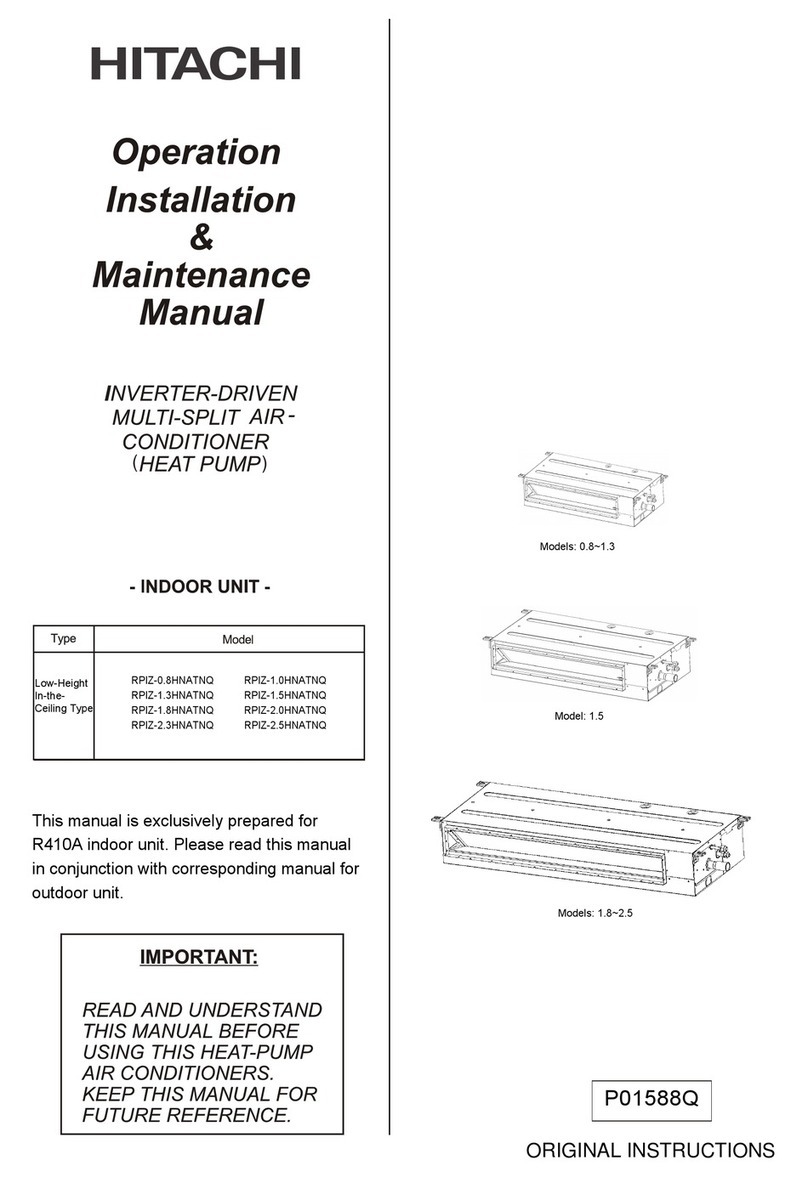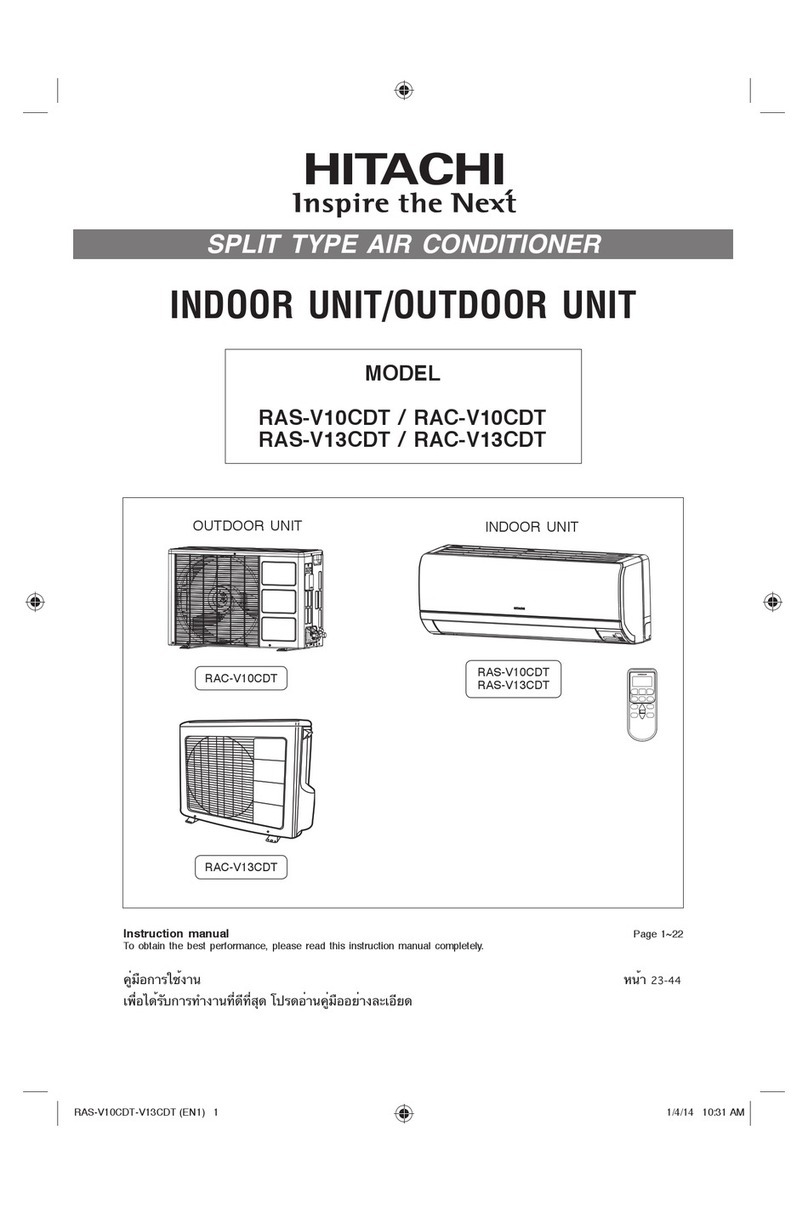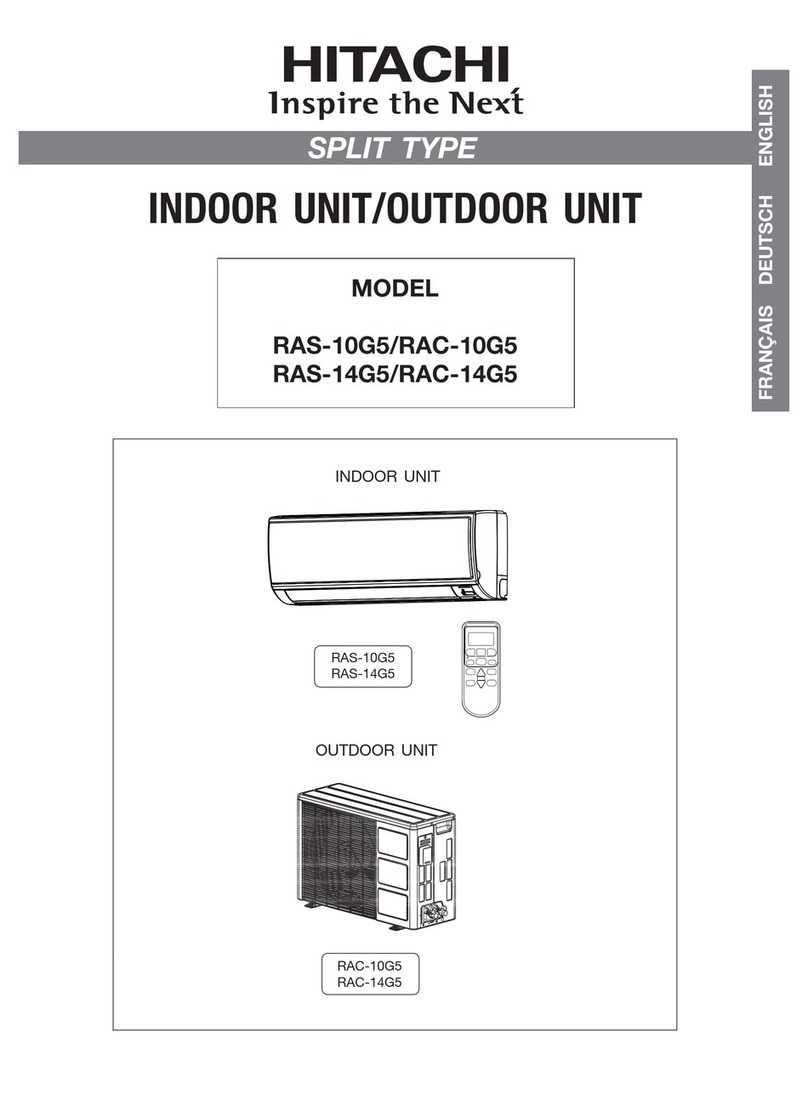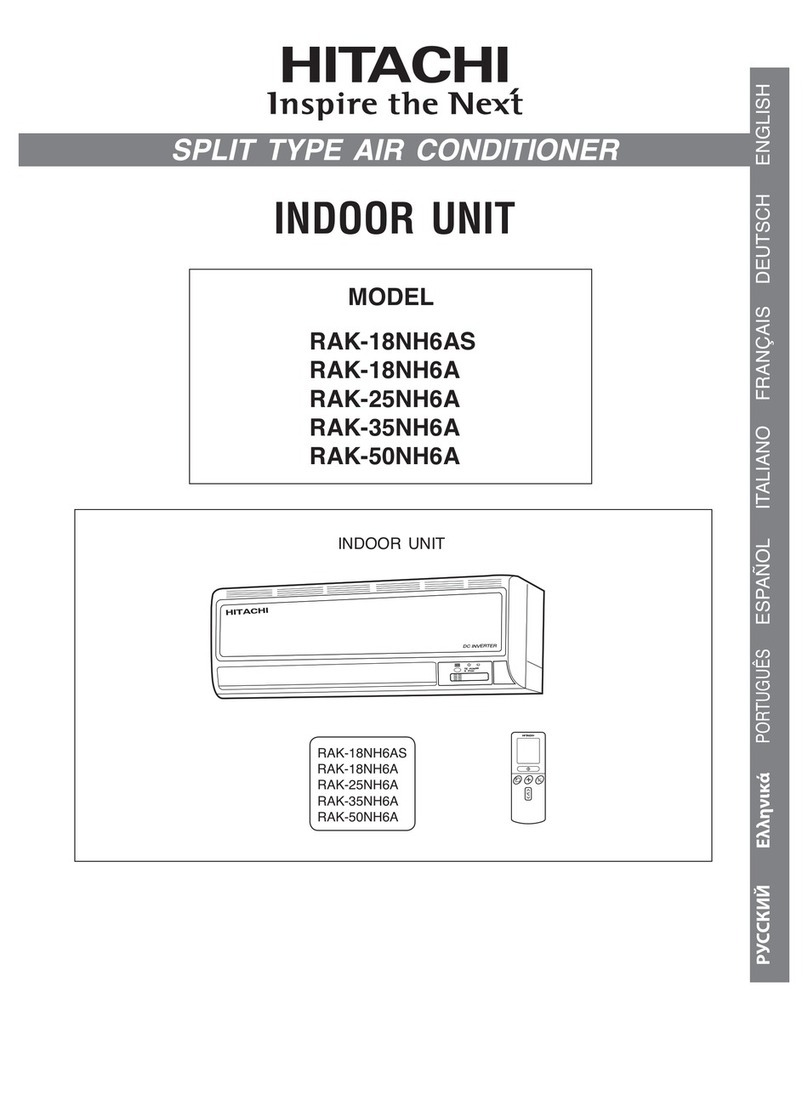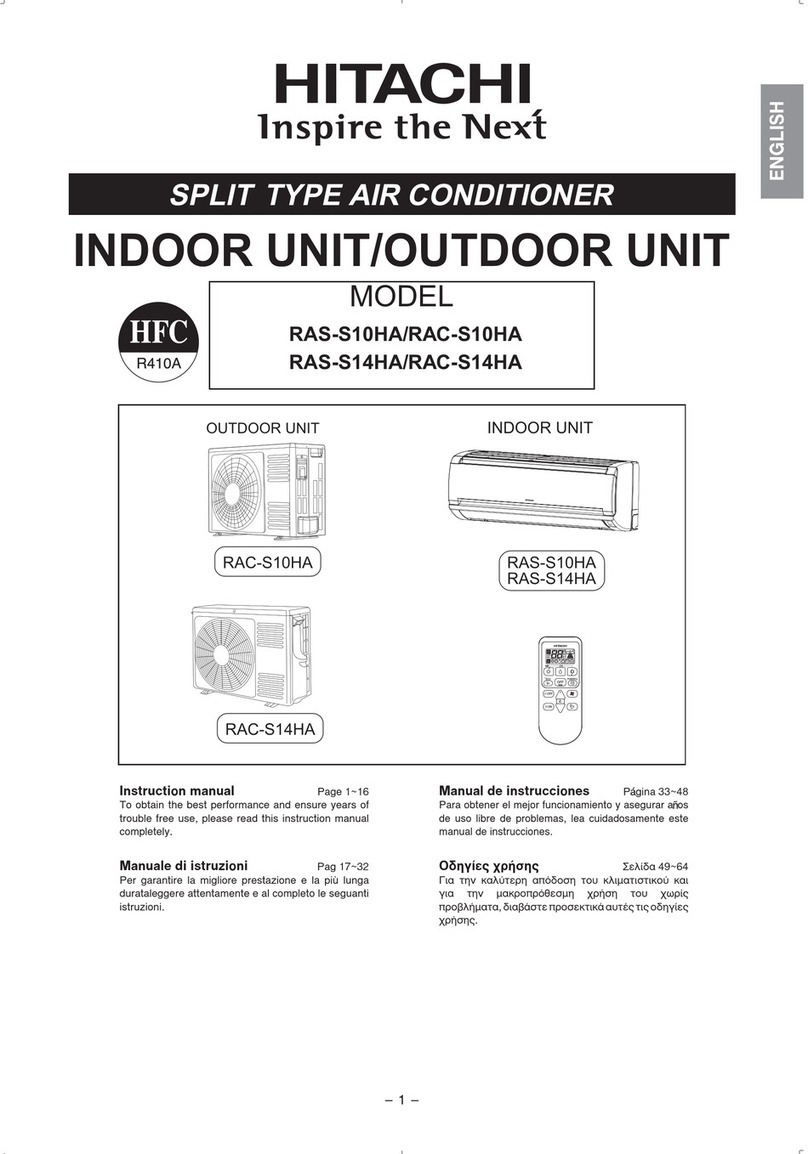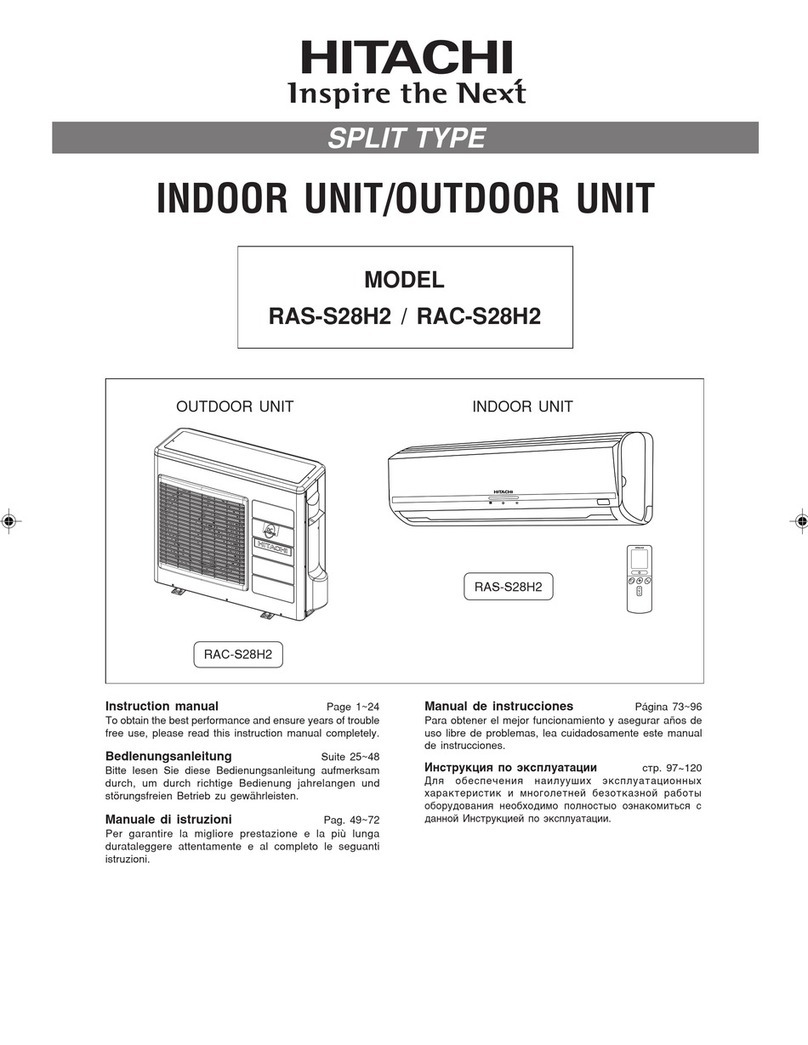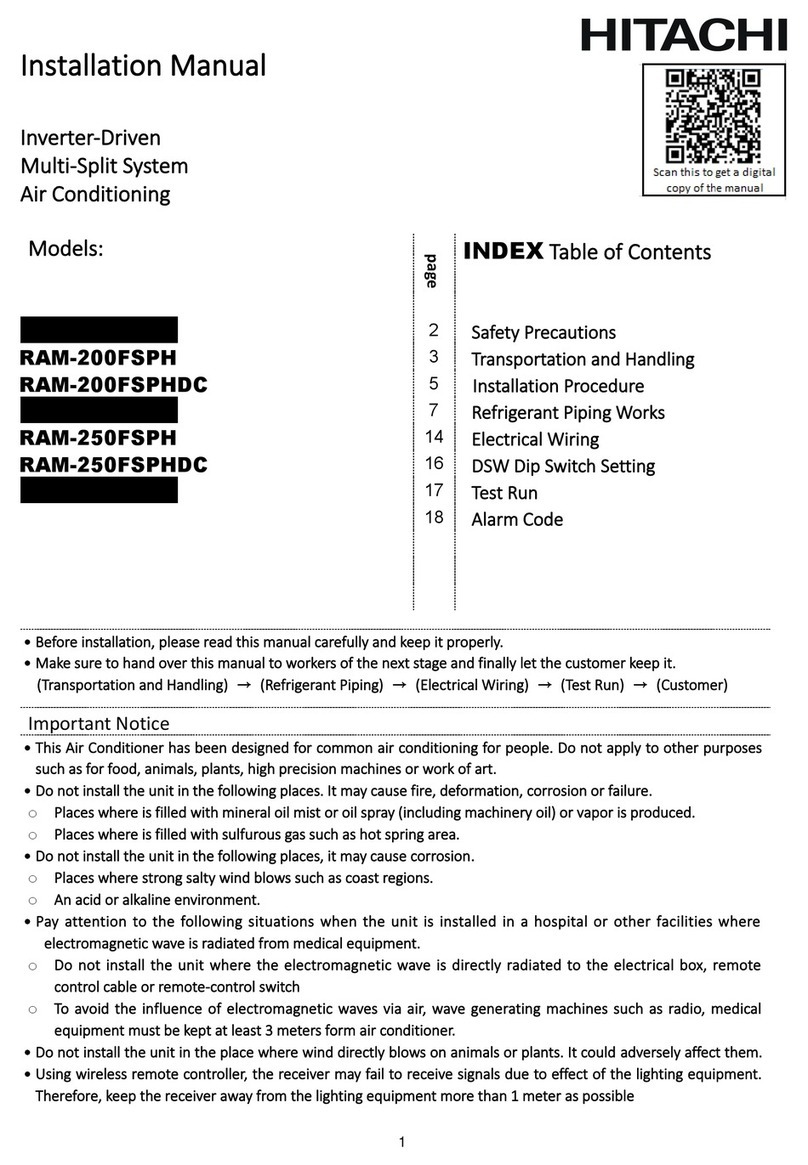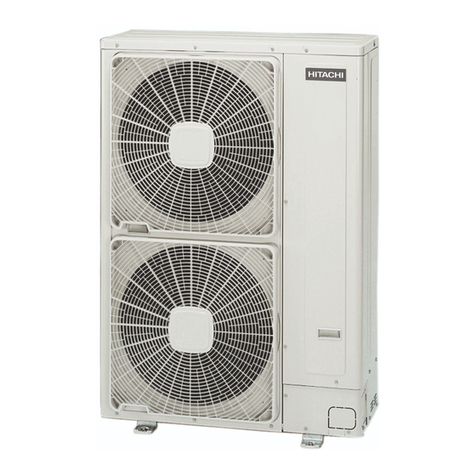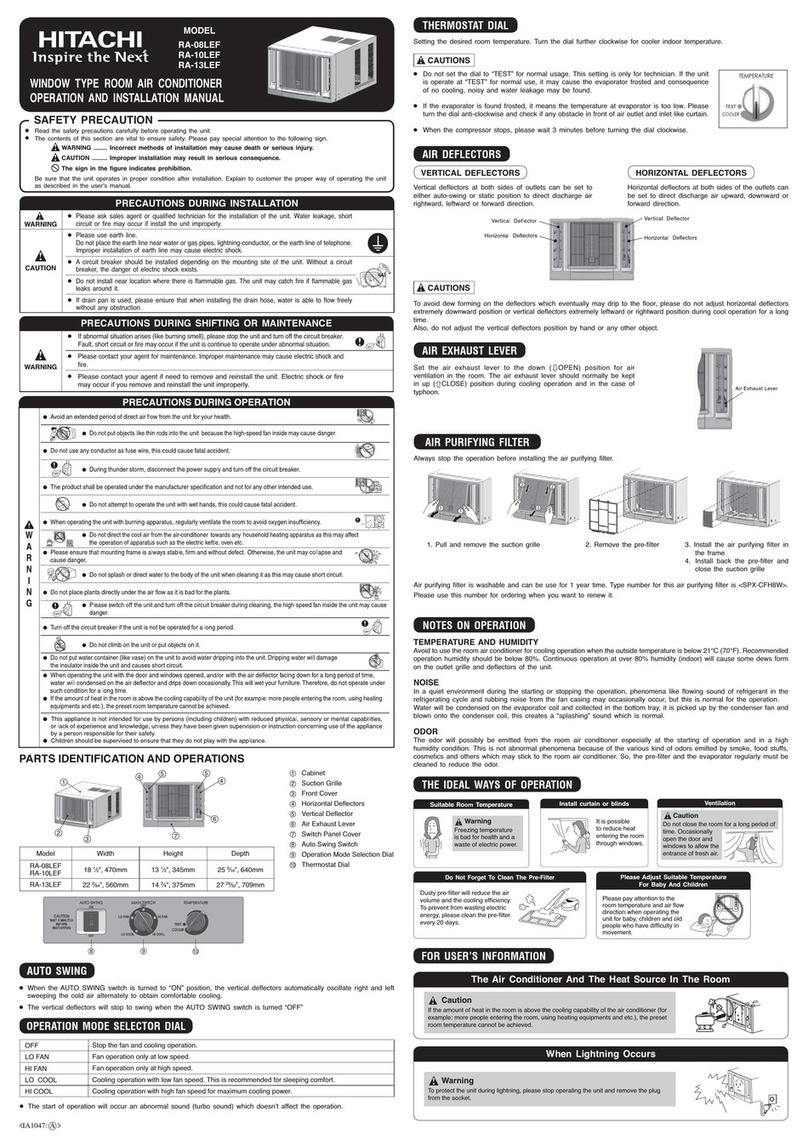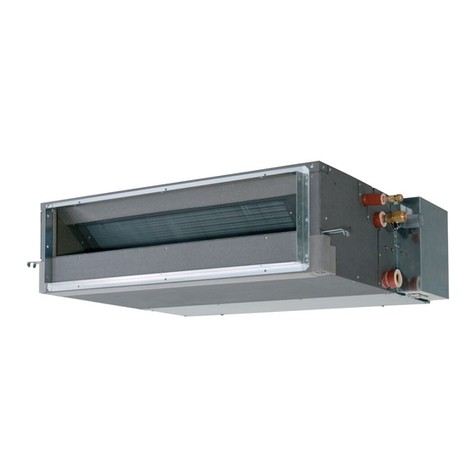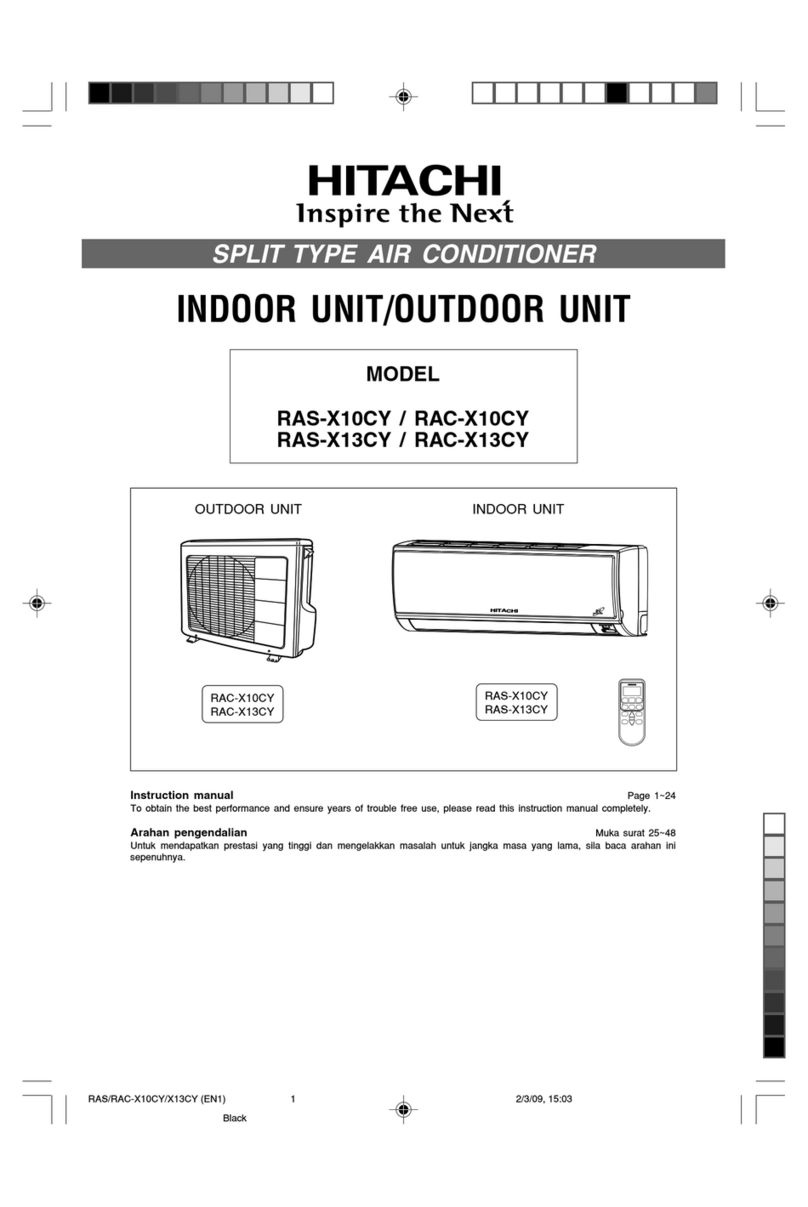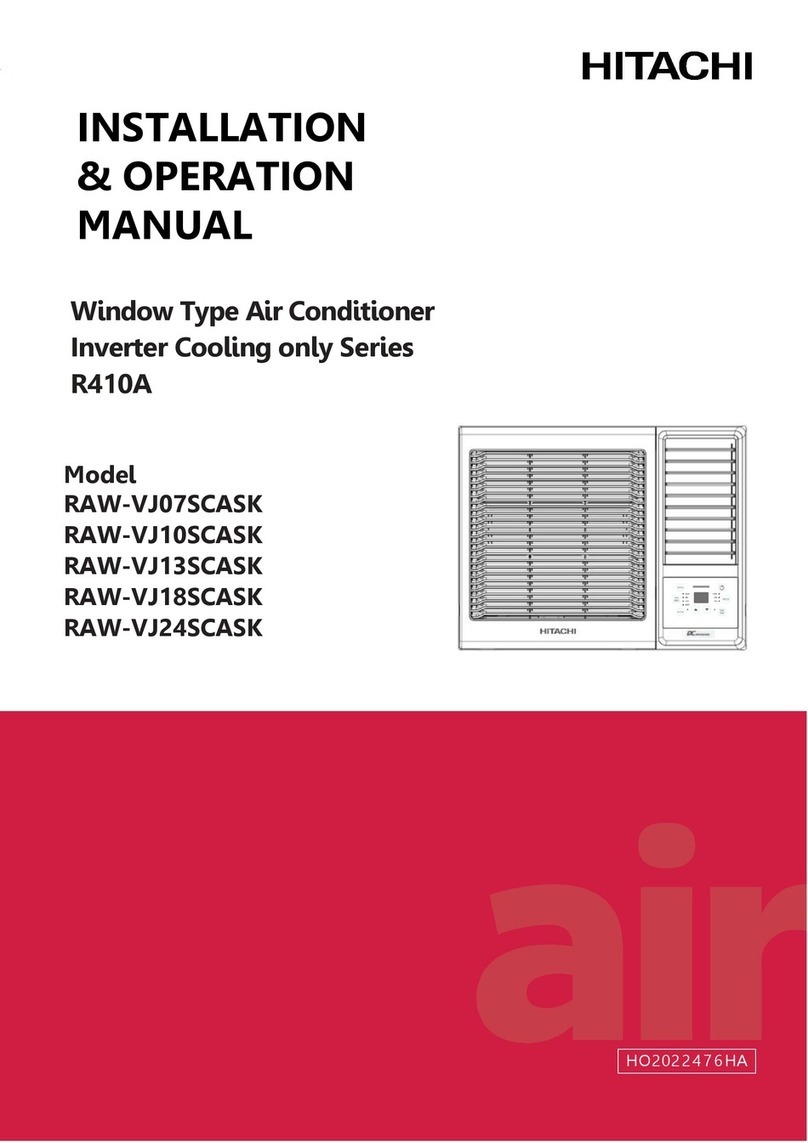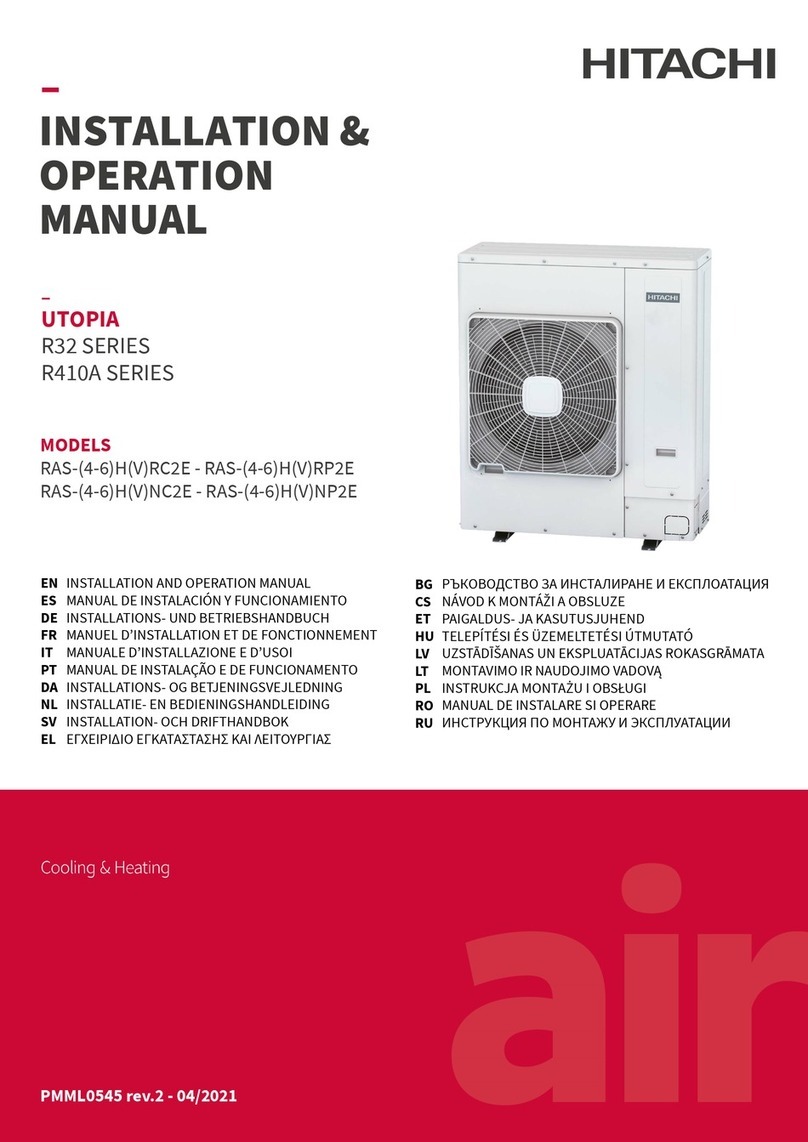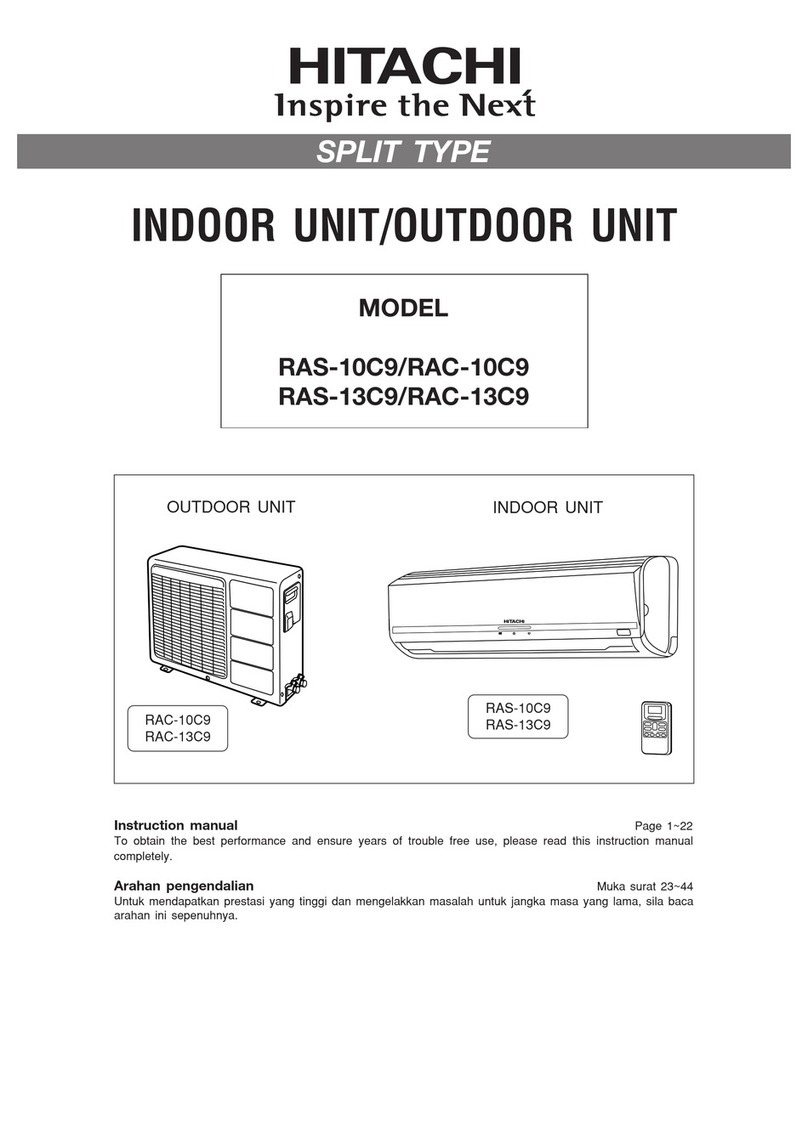
1. Safety Summary
3A16381E84N-rev.1
• Do NOT install the unit in the following places. Doing
so can result in an explosion, fire, deformation,
corrosion, or product failure.
○Explosive or flammable atmosphere
○Where a fire, oil, steam or powder can directly
enter the unit, such as nearby or above a kitchen
stove.
○Where oil (including machinery oil) may be pres-
ent.
○Where corrosive gases such as chlorine, bromine,
or sulfide can accumulate, such as near a hot tub
or a hot spring.
○Where dense, salt-laden airflow is heavy, such as in
coastal regions.
○Where the air quality is of high acidity.
○Where harmful gases can be generated from de-
composition.
• Do NOT position the condensate pipe for the indoor
unit near any sanitary sewers where corrosive gases
may be present. If you do, toxic gases can seep into
breathable air spaces and can cause respiratory
injuries. If the condensate pipe is installed incorrectly,
water leakage and damage to the ceiling, floor,
furniture, or other possessions may result. If the
condensate pipe becomes clogged, water may drip
from the indoor unit. Do NOT install the indoor unit
where such dripping can cause moisture damage or at
uneven locations.
• During transportation, do NOT allow the backrest of
the forkli make contact with the unit, otherwise, it
may cause damage to the heat exchanger and also
may cause injury when stopped or started suddenly.
• Before performing any brazing work, be sure that
there are no flammable materials or open flames
nearby.
• Remove gas inside the closing pipe when the brazing
work is performed. If the brazing filler metal is melted
with remaining gas inside, the pipes will be blown o
and it may cause injury.
• Be sure to use nitrogen gas for the airtight test. If
other gases such as oxygen gas, acetylene gas or
fluorocarbon gas are accidentally used, it may cause
an explosion or gas intoxication.
• Perform a test run to ensure normal operation. Safety
guards, shields, barriers, covers, and protective
devices must be in place while the compressor/unit
is operating. During the test run, keep fingers and
clothing away from any moving parts.
• Do NOT install the indoor unit anywhere discharge
airflow can pass directly toward nearby heating
equipment (space heaters). It may interfere with the
combustion process in these units.
• When the indoor unit is operating with heating
equipment, ventilate the room suiciently. Any leaked
refrigerant gas that happens to come into contact with
any heat source can become toxic on contact and can
cause suocation in the immediate area.
• Do NOT install this system in close proximity to septic
sewer lines where flammable and toxic gases can
coalesce.
CAUTION
To reduce the risk of minor or moderate injury, the
following installation precautions must be followed.
• Proper handling of this unit requires two people. Safe
handling and installation of the indoor unit requires
the strength of two people. Mounting the unit alone
may cause injury due to a fall of the unit. Although the
unit may be girded with plastic bands, do NOT use it
for transportation. Avoid contact with finned surfaces
of the heat exchanger as sharp edges can cause severe
injury to hands and fingers. Use appropriate work
gloves for the job.
Take the following precautions to reduce the risk of
property damage.
• The optional decorative panel can become deformed
if the positioning of the indoor unit's suspension
brackets is not stable or level. Condensation can
accumulate in low spots as a result due to escaping air
through any resulting gaps between the indoor unit
and the decorative panel.
• Check to ensure that the condensate hose discharges
moisture properly. If connected incorrectly, it can
result in leakage and cause damage to furniture.
• Make sure to use the factory-supplied condensate hose
and hose clamp. Non-factory supplied condensate
hose and hose clamp can cause water leakage.
• Do NOT bend or twist the factory-supplied condensate
hose. This could compromise the seal and result in
water leakage.
• Do NOT apply excessive force to the condensate
pipe connection. This can also compromise the seal
properties of the connection.
• Verify that the installed unit is level with floor and
ceiling surfaces. Any variance or inclination can
cause moisture to back up into the condensate pan,
overflow, and seepage onto ceiling or wall surfaces,
and cause damage to carpeted surfaces or furniture
below.
• Air circulation should be optimized to achieve the
best distribution pattern and not settled into isolated
pockets that can make people uncomfortable.
• Inspect the condensate pan before the onset of winter
to drain away all accumulated water in the pan.
• The heat exchanger of indoor unit overheats whenever
there is a slight amount of refrigerant circulating
during slowdown or stoppage. As a result, water in
the condensate pan evaporates and can condense on
ceiling or wall surfaces.
• Aer the drain check is completed, insert the rubber
plug again and seal the gap with a silicon sealant.
• Clean up the site when finished, remembering to
check that no metal scraps or bits of wiring have been
le inside the unit being installed.
